On to North Dakota
July
6 - July 10
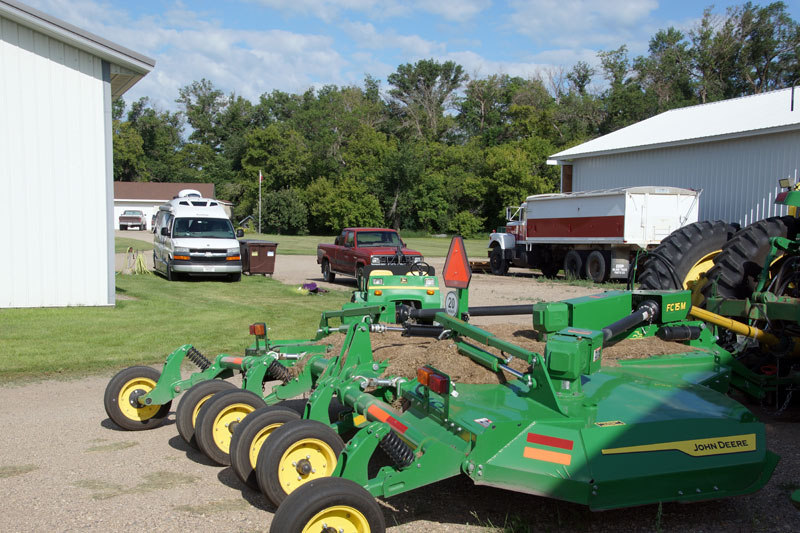
We parked overnight at a farm near Grand Forks, ND. We
are able to arrange overnight parking at farms, wineries, and other
businesses through an organization called Harvest Hosts. This farm was
a large operation - about 6000 acres.The owner said
that he accepts overnght guests as his contribution to educating
the public about farming and agriculture.
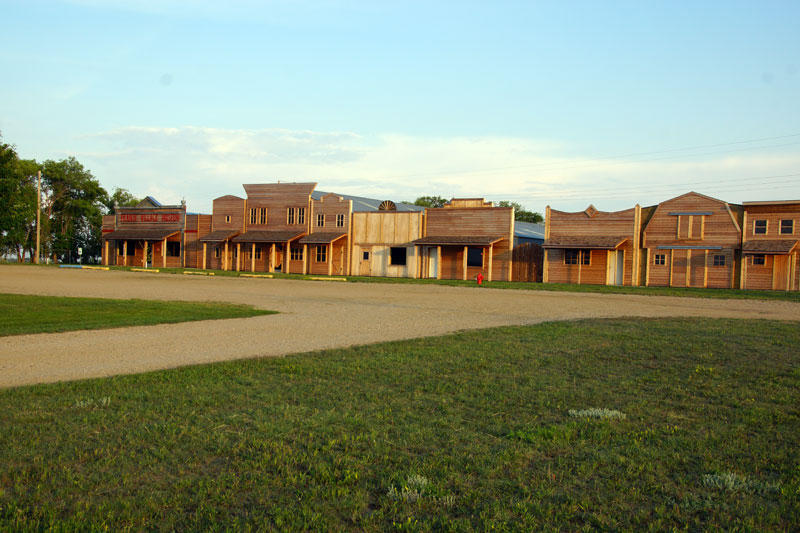
Our next stop was the Prairie Village Museum in Rugby, ND. For the
price an admission to the museum we were able to park here overnight.
The museum tells the story of Germans in Russia who immigrated to North
Dakota. It also tells the story of an interesting, but little known
connection between North Dakota and Queen Victoria in England.

Behind the facade seen above is an 1880s railroad town. All aboard for
1880 in North Dakota!
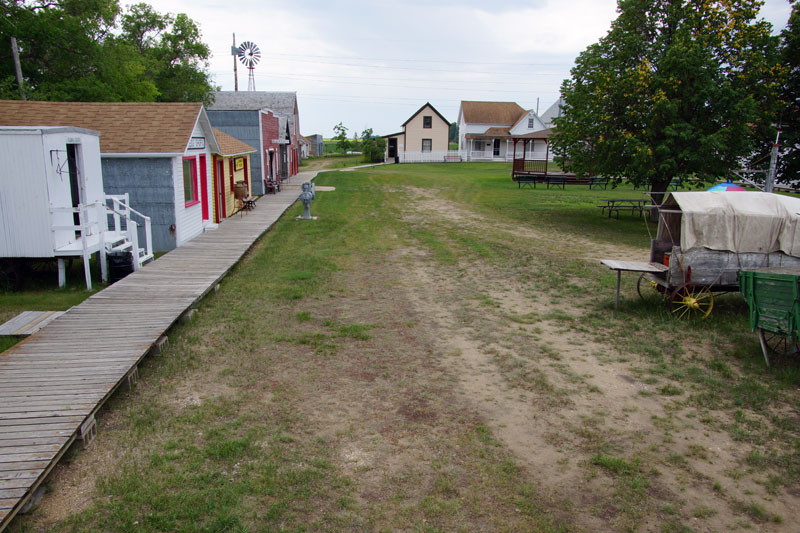
The 1880s street scene.
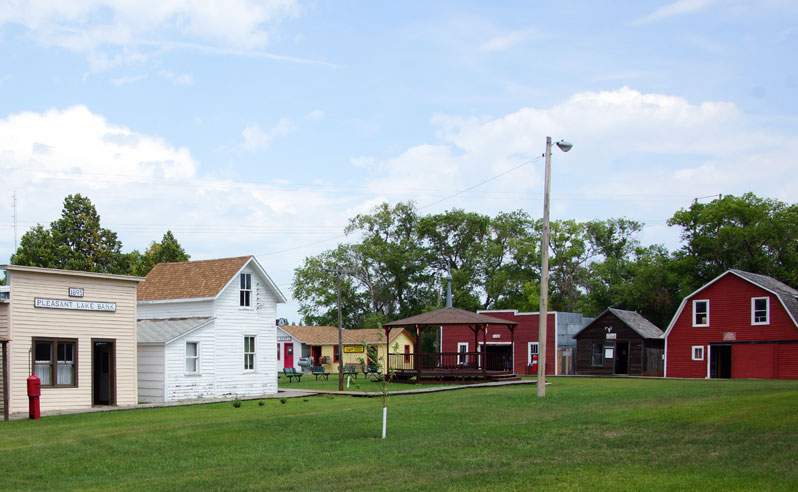
The contents of the buildings depict small town life
in the 1880s, especially for Germans who immigrated to North Dakota
from Russia.
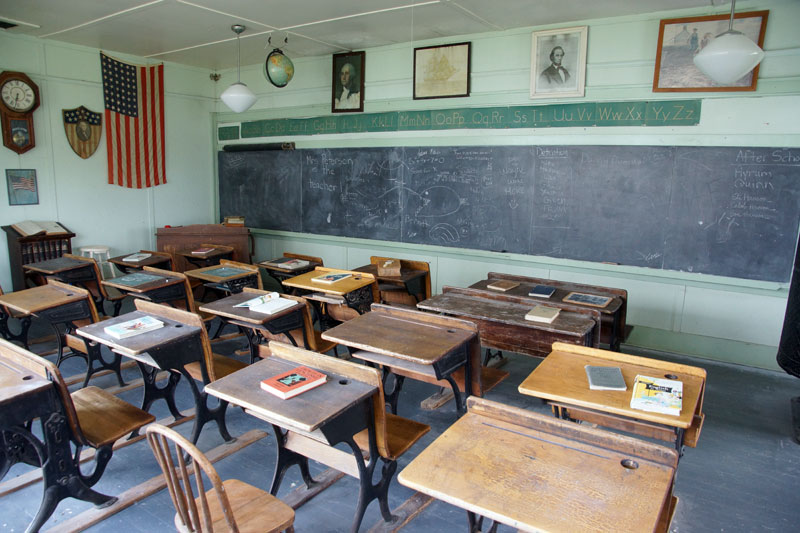
This one-room school reminded me of the two-room school I attended
when I was in the first grade.
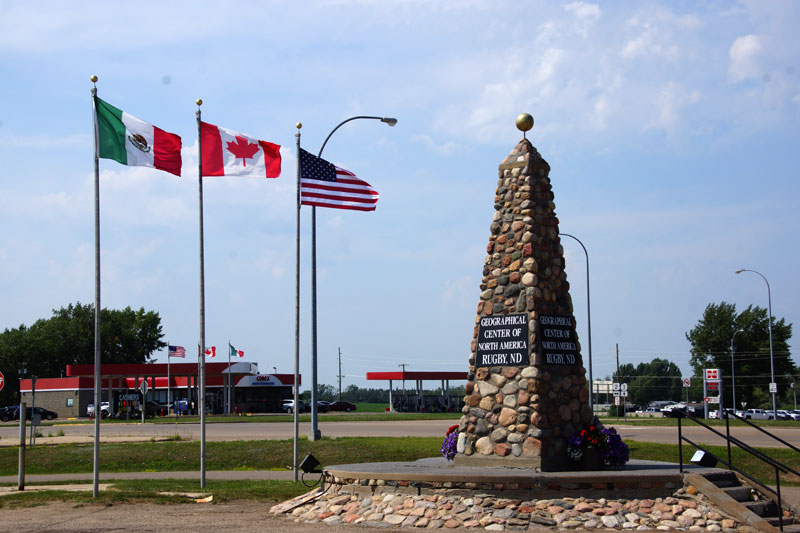
Rugby claims to be at the geographic center of the North American
continent. It seems they will say anything that might attact visitors.
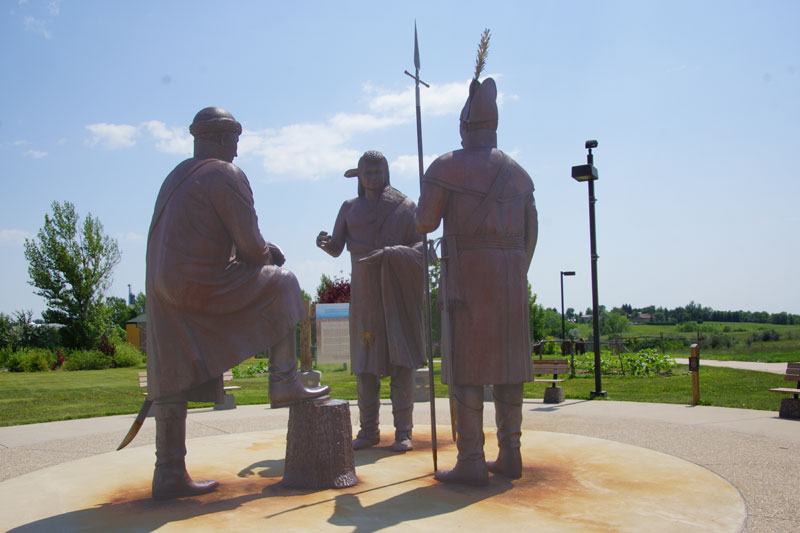
Our next stop was Washburn, which is on the Missouri river and an
important location on the Lewis and Clark Trail. This is where
Lewis and Clark built Fort Mandan and where the Corps of Discovery
spent their first winter on their expedition
to the Pacific Ocean. The sculpture shows Lewis and Clark meeting
with Mandan chief Sheheke-shote at the start of their stay there.
The chief is quoted as saying, "If we eat, you shall eat, if we starve,
you must starve also."

A reconstruction of Fort Mandan, where the Lewis and Clark Corps
of Discovery spent the winter.
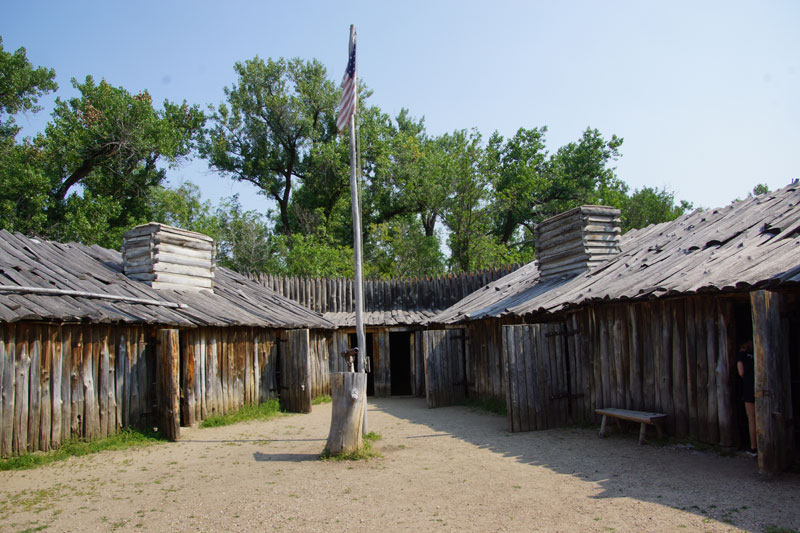
The interior of the fort. Considering how cold it gets in North
Dakota, this must have been a miserable stay.

A reconstructed Mandan eath lodge at the nearby Knife River Indian
Villages historical site. The lodges were typically 30 to 60 feet in
diameter, large enough to house an extended familty (about 5-15
persons).
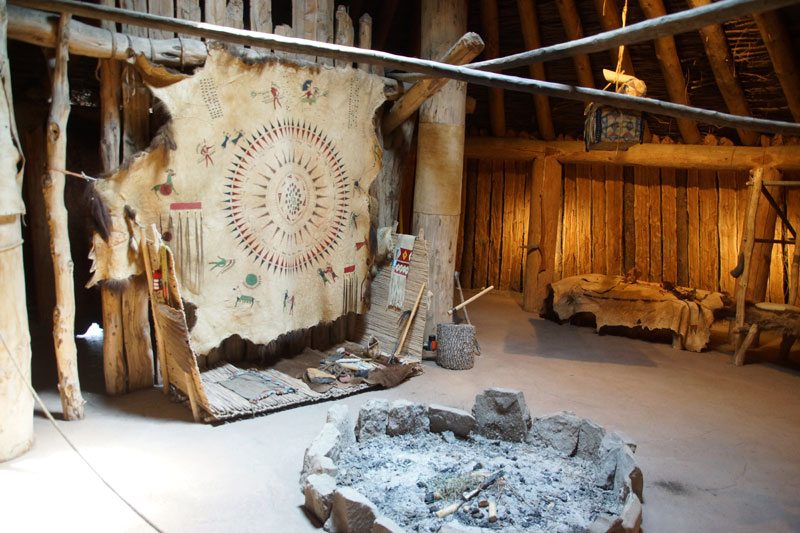
The interior of the lodge.
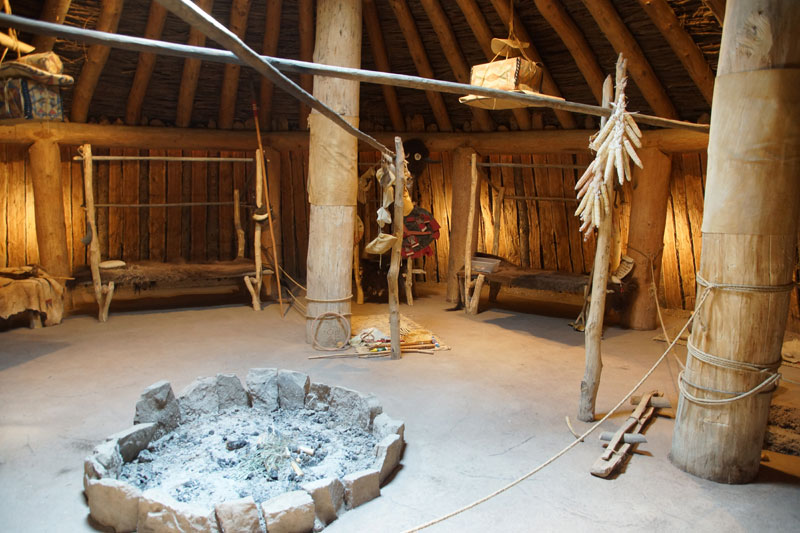
Another view of the interior.
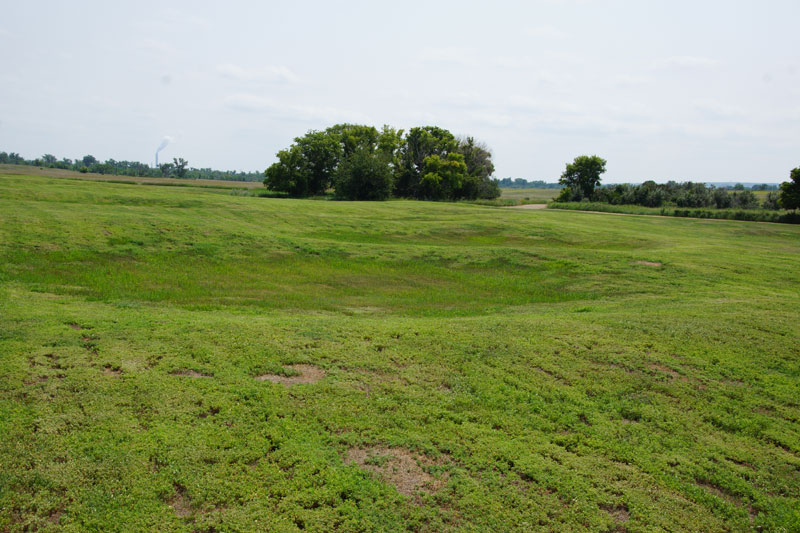
The actual location of an Indian village. All that remains of the
lodges are these depressions in the ground.














